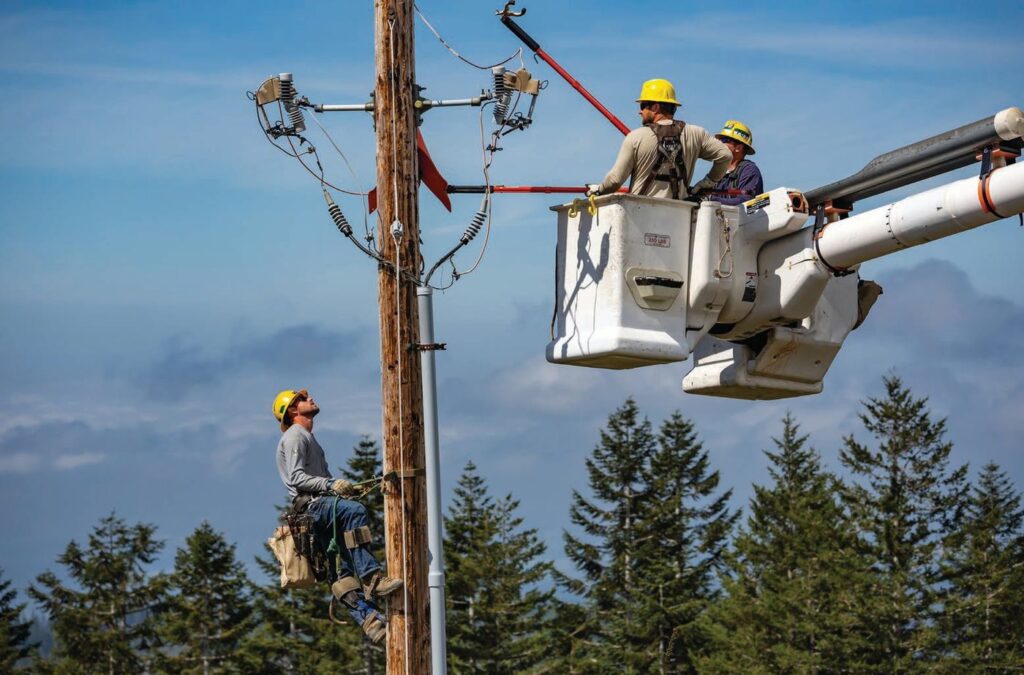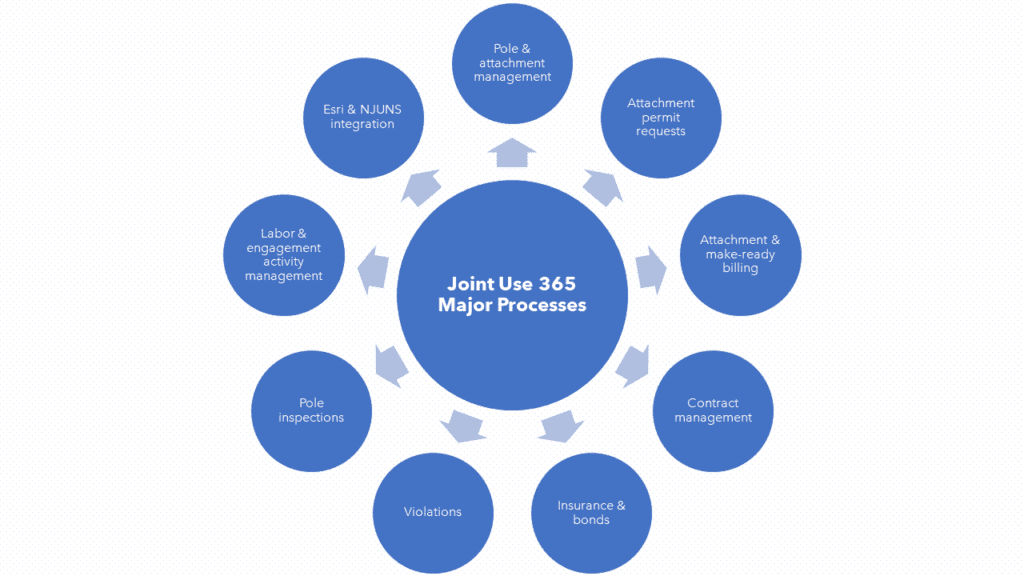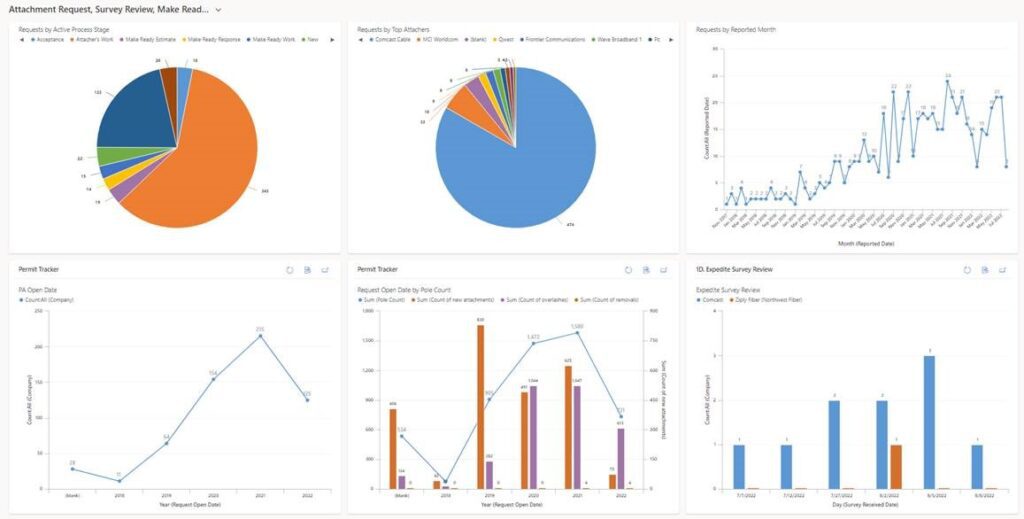
Summary
The modern utility faces many challenges in providing customers with the most accessible, reliable service. Today’s pressing concern is making broadband internet service widely available. Clark Public Utilities (CPU) is a customer-owned utility that provides electric power to Clark County, Washington. Its service area covers nearly 630 square miles, supplying power to over 219,000 customers in rural and metropolitan areas.
To help communication companies bring faster and more consistent internet to customers, CPU had to make significant changes to its broadband attachment management system. CPU needed to accelerate attachment construction on its poles, automate its permitting processes, remove inefficient workarounds, and improve its solution for supporting utility pole joint use management. Varasset rose to the occasion by upgrading CPU’s system to Joint Use 365, a new product developed on Microsoft Power Apps.
Background
The significant shift from in-person jobs, education, and health care to digital platforms due to the COVID 19 pandemic created enormous demand for high-speed, accessible internet. In its Notice of Proposed Rulemaking, the Federal Communications Commission (FCC) claims that
“Broadband access is critical to economic opportunity, job creation, education, and civic engagement. That is why closing the digital divide is the Commission’s top priority. For communities throughout our nation to thrive and prosper, their residents must have the option to obtain high-speed Internet access.”
Federal Communications Commission
As a result, the US government developed funding programs to support communications companies implementing broadband internet networks all over the country. Those communications companies rely heavily on public and private utilities to bring broadband internet to underserved or unserved communities as fast as possible. For communication companies to get the most mileage per dollar it’s more economical to attach to existing utility poles than to construct underground.
Challenge
Utility pole joint use requires a pole owner to work closely with third-party communications companies and contractors to facilitate the broadband device attachment process. A utility’s joint use department must prepare a pole for any required construction (also known as make-ready), receive and process permits, and manage rental billing for the space on the pole.
The attachment process is time-consuming, communication-heavy, and can take months. In addition, the sheer number of communications companies that want to attach their products to utility poles overwhelms many joint use departments. This is where a joint use management system can be helpful. It can streamline each process through a central database, integrate with existing GIS data, which stores valuable pole location information, prevent information silos, speed the permitting process, and lessen the attachment timeline.
CPU used Varasset software to manage and combat these common challenges. Having a 20-year relationship with Varasset, CPU appreciated Varasset software’s versatility and GIS integration capability. However, it still found that its joint use department struggled to keep up with the massive influx of attachment requests. When Varasset announced its new product, Joint Use 365, CPU knew there was a choice to make. CPU could upgrade its version of Varasset or explore the possibilities of Joint Use 365. After deliberation and consultation by the Varasset team, CPU switched to Joint Use 365 to manage the “broadband tsunami” that was drowning its joint use department.

Strategy
CPU integrated its previous joint use system with its GIS data, allowing it to store critical utility pole data. However, CPU didn’t use its joint use system to store pole attachment (PA) requests or existing PA data. That data was stored in NJUNS, a widely used interagency notification system designed for utilities.
While the primary purpose of NJUNS is to alert pole owners, attachers, and contractors of project status, NJUNS can also house PA data. In 2018, NJUNS partnered with Varasset to enhance the functionality of the PA module, making integration with NJUNS highly desirable. Without it, CPU had to manually copy PA data from NJUNS and input it onto a spreadsheet, increasing the risk of errors.
Fortunately, Varasset developed Joint Use 365 with an open REST API. Not only could Joint Use 365 incorporate CPU’s GIS data, but it could also seamlessly integrate NJUNS PA requests and status updates into one unified database. This allows attachers to create and send PA requests in NJUNS that simultaneously post to CPU’s Joint Use 365 environment without any manual entry on CPU’s part.
CPU can develop lists of activities and steps for make-ready through Joint Use 365 that automatically post to NJUNS. This updates attachers in real-time on the status of their attachments, improving communication and significantly reducing project timelines.
Joint Use 365 removes the need to operate in duplicate, siloed programs. This reduces the likelihood of errors and hastening the attachment process altogether. Joint Use 365 allows CPU to manage all of its pole attachment activity from one centralized command center. CPU uses Joint Use 365’s customizable dashboards to receive and share live data regarding PA requests, permitting, make-ready, and related tasks. This allows CPU to forecast attacher trends and create automated task reminders to prevent project delays. And, because Joint Use 365 is built on Microsoft Power Apps, CPU can leverage its existing Microsoft investments to integrate with Teams, Office 365, and Azure.

Results
CPU has already seen a significant change to its joint use department. Joint Use 365 has reduced the demand that pole applications put on the department. It has lessened the likelihood of slipping into a backlog that was once challenging to get out from under. It improves CPU’s communication with attachers through permitting automation and real-time job notifications.
CPU can maximizes the value of its existing GIS and NJUNS systems by integrating them into Joint Use 365. With this approach, more of the responsibility is on the attachers to enter the correct data on the front end, letting CPU focus on other strategic tasks. By using Joint Use 365, CPU can assure the residents of Clark County that they are now using the latest technology and software. CPU is proactively working with communication companies to provide broadband internet at a pace that can keep up with the speed at which broadband internet can be built.
If you’re interested in maximizing the efficiency of your utility the way Clark Public Utilities has, please contact us to schedule a demo of Joint Use 365.

